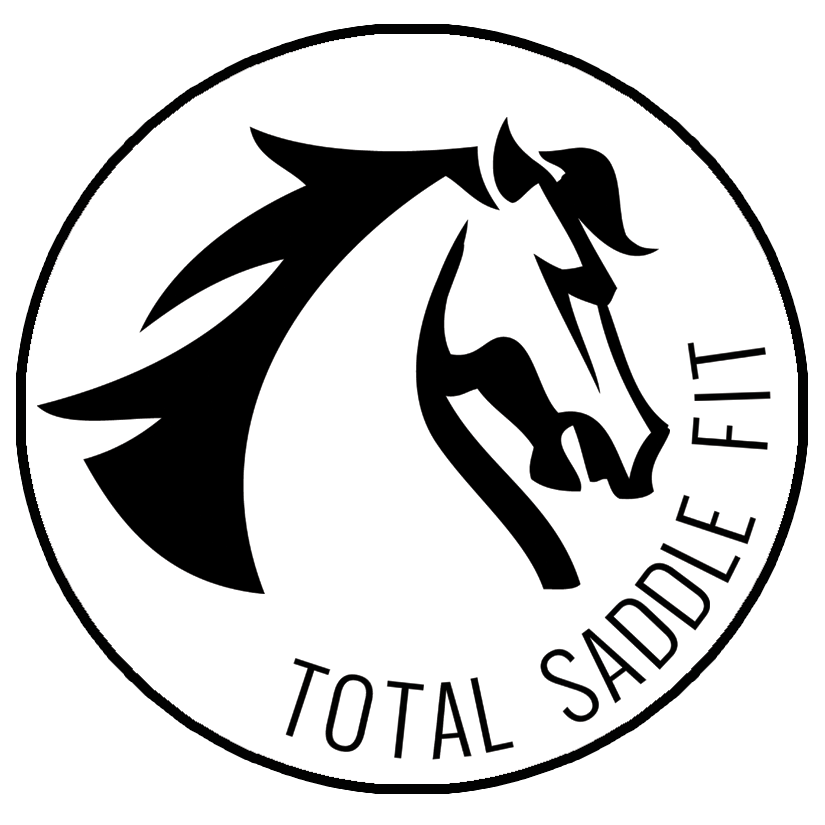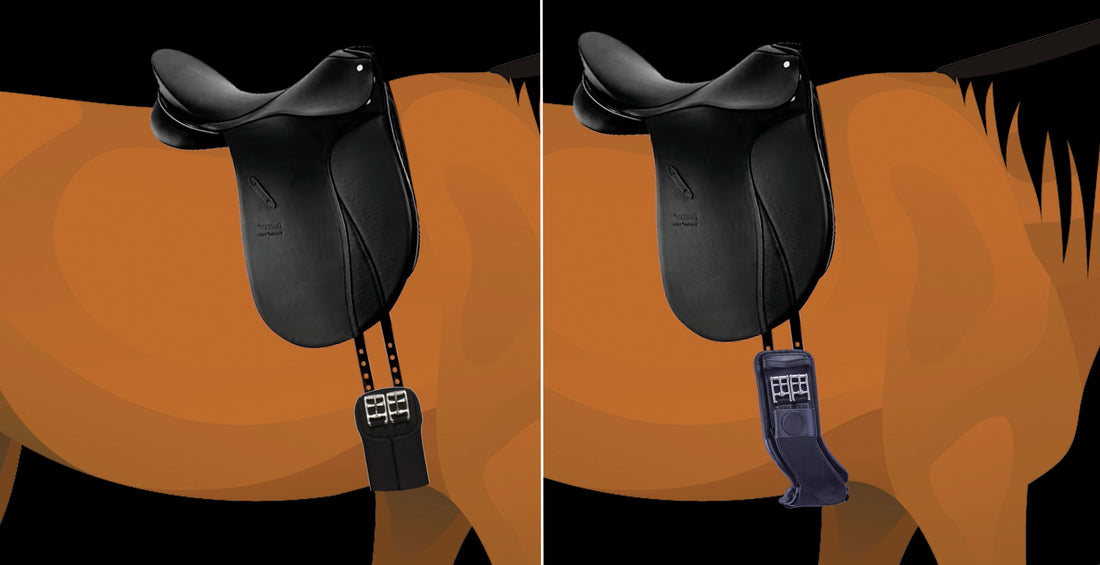In this article I cover some of the benefits and drawbacks of contour girths/cinches. For the majority of this article I use the word "girth", but everything equally applies to Western cinches. The function is identical across both disciplines.
If you'd prefer this information in video form, scroll to the bottom of the page to watch the video.
Contour girths (sometimes called anatomic girths) have gained a lot of popularity in recent years for both English and Western saddles. While you usually hear of the benefits, there are drawbacks too. I will cover both the good and bad in one moment. But first, a quick explanation of how they work.
The primary function of most contour girths is to shape around a horse's body in a way that allows the saddle billets to attach farther back on the body compared to a regular straight girth. The intention here is to prevent the saddle from being pulled forward into the horse's shoulders.
This is accomplished with the unique "squiggly" design. The shaped allows the center of the girth to sit in the horse's natural girth groove (the shortest distance around their barrel), while the buckles are placed 1-2 inches farther back.
This photo illustrates the difference in billet angle and saddle position when comparing a straight girth to a contour girth:

Now that we've covered the basics of how these girths function, it's time to cover the pros and cons.
Pros
1. Shoulder Freedom. As I just explained, the primary benefit from a contour girth or cinch is preventing the saddle from interfering with shoulder (scapula) movement.
2. Elbow Comfort. The unique shape of the girth also makes a natural elbow comfort feature. It scoops out an area around the elbow for more clearance, like this:

3. Saddle stability. Contour girths neutralize the pressure on a saddle from the billets/girth, and in doing so makes the saddle much more stable overall. With contour girths saddle are less likely to slide forward/backward, bounce or shift.
Cons
1. Price. Contour girths are more expensive than regular straight girths/cinches. The reason is because contour girths need to hold their shape and require stiffer material to do this... usually leather. On the contrary, you can buy a basic webbing girth or cinch on Amazon for $35. Contour girths will usually cost over $100.
2. Sizing. Contour girths are much more finicky in sizing compared to a straight girth. A straight girth length can vary wildly, as long as it reaches the billets, and still be effective. A contour girth needs to be much more fine-tuned in size because fitting the sternum placement, elbow position and buckle position all make a big difference.
I hope this helps paint a clearer picture of the positives and negatives of contour girths and cinches.
If you have any comments or questions definitely reach out via our website form or through social media to discuss.
All the best,
Justin
P.S. If you want to see this information in video form, check this out:

